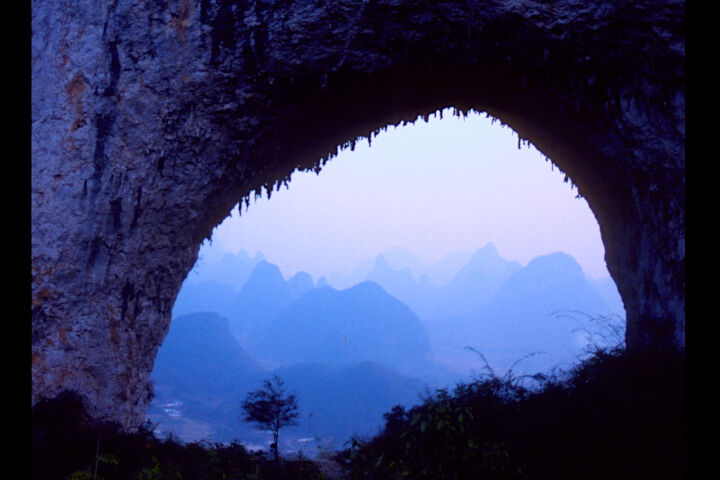Not on view
Date
2017
Classification
Sound Work
Medium
Sound installation, 12:08 min. looped
Dimensions
Dimensions variable
Accession number
2023.24
Edition
1/3 | 3 APs
Credit line
Whitney Museum of American Art, New York; purchase, with funds from the Director's Discretionary Fund
Rights and reproductions
© Raven Chacon
Audio
-
0:00
Billboard: Raven Chacon, Coro silencioso
0:00
Raven Chacon: Silent Choir, tanto en el formato de audio como en el de fotografía, nunca estuvo destinado a ser una obra de arte. Un día fui a la reserva Standing Rock durante las protestas de #NoDAPL contra la construcción de oleoductos en el norte de Estados Unidos que se desarrollaron en 2016. Y fui como invitado, como otro indígena americano atrapado en este país que quería entender lo que estaba sucediendo en ese lugar. Al mismo tiempo, también quería estar presente, ser otro testigo, pero sobre todo observar y escuchar.
Se oían ruidos, se oían helicópteros en el cielo. Se oía a la gente cantar en medio de la noche y también se oían largos momentos de silencio.
Narrator: Los sonidos que se grabaron en ese momento se encuentran en el sexto piso de la Bienal, dentro del Whitney Museum.
El domingo después del Día de Acción de Gracias, las mujeres mayores del campamento encabezaron una resistencia silenciosa en el puente que conecta la reserva con Bismarck, Dakota del Norte. Se enfrentaron a la policía estatal y a la seguridad del DAPL, el proyecto de oleoductos Dakota Access Pipeline.
Raven Chacon: Liderados por estas mujeres, un grupo de manifestantes llegaron al puente y simplemente se quedaron mirando a los policías. No dijeron ni una palabra. No hubo gritos, ni súplicas, ni nada. Solo una mirada fija. Entonces, lo que pude captar fue el sonido de quinientas o seiscientas personas en absoluto silencio y mirando a la policía. En retrospectiva, cuando volví a casa y escuché la grabación, pude sentir el poder de esos cuerpos, de esas personas, indígenas americanos y aliados que luchaban sin tener que decir una palabra.
Narrator: Instalada a la altura de un segundo piso frente al extremo sur del High Line, la imagen parece recrear esta escena aquí en la ciudad de Nueva York.
Raven Chacon: Aunque no tenía la intención de que esta imagen se convirtiera en una obra de arte, agradezco que los curadores hayan visto que se trataba de una imagen trasladable, como si la policía fuera a poner una barricada en el High Line. Uno puede encontrarse en ese lado de una situación así.
Por eso, creo que poder ver que estas imágenes o estas fotos en plano subjetivo podrían trasladarse a tu propio hogar puede ser una experiencia muy poderosa.
-
0:00
Billboard: Verbal Description: Raven Chacon’s Silent Choir
0:00
Narrator: Raven Chacon’s Silent Choir (Standing Rock), 2017–22, is a billboard measuring 17 × 29 feet. (5.2 × 8.8 m).
Raven Chacon: This is an image of a couple hundred water protectors on the Backwater Bridge.
Narrator: This is a photograph by artist Raven Chacon showing water protectors just outside of Standing Rock Reservation in North Dakota. This bridge connects the reservation to Bismarck North Dakota which is off the reservation. Using some very large vehicles, state police and the Dakota Pipeline—or DAPL—security have barricaded this bridge.
Raven Chacon: In the foreground, you see a couple hundred water protectors confronting the DAPL security further on the bridge. You also see a few other objects: particularly a giant wind sock that an artist has made that says “mni wiconi,” which means “water is life.” And this photo was taken, I believe, at about 4 o’ clock in the afternoon in November on Thanksgiving weekend, the last hours of daylight.
-
0:00
Billboard: Raven Chacon, Silent Choir
0:00
Raven Chacon: Silent Choir, both in the audio form and the photograph form, were never intended to be an artwork. I went to the Standing Rock Reservation during the #NoDAPL water protection that was happening in 2016. And I came as a guest, as another American Indian trapped in this country who wanted to understand what was happening in this place. At the same time, be another presence, another witness to this as well, but mostly watching and listening.
You would hear noises, you would hear helicopters in the sky. You would hear people singing through the night and then you would hear big instances of silence as well.
Narrator: The recorded sounds from this moment are on the sixth floor of the Biennial inside the Whitney Museum.
On the Sunday after Thanksgiving, the elder women of the encampment led a silent resistance on the bridge that connects the reservation to Bismarck, North Dakota. They faced state police and DAPL—or, Dakota Access Pipeline—security.
Raven Chacon: Led by these women, this group of people came onto the bridge and just stared at the police. And didn’t say a word. No yelling, no pleading, nothing. Just staring. And so, what I was able to capture was the sound of five or six hundred people just being absolutely silent and staring at the police. In retrospect, when I went home and listened to the recording, I could feel the power of those bodies, of those people, American Indian people and allies confronting and having to not say a word.
Narrator: Installed at second-story height across from the southern tip of the High Line, the image appears to recreate this scene here in New York City.
Raven Chacon: Even though I had not intended this image to become an artwork, let’s say, I’m grateful that the curators had seen that this was a transposable image, as if police would barricade off the Highline. One might find themselves on that side of such a situation.
So, to be able to see that these images or these point of view photos could be transposed in your own home, I think can be a very powerful experience.

